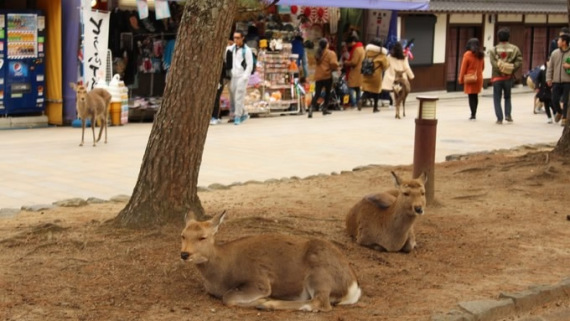
CGTN Photo
The wild deer in Nara, western Japan, beloved by tourists for their "politeness" of bowing for a treat, could face capture for the first time from this week, if they wander too far away from the central tourist area.
Nara deer, including those in and around Nara Park, home to the freely roaming animals, have been protected under law since being designated as a sacred natural treasure by the Japanese government in 1957.
The number of the sika deer has continuously grown since then, with more than 1,200 now making the city their home.
The increasing number of the mammals, however, generates a problem that local people, particularly farmers, have been confronted with deer encroaching on fields and eating crops and vegetables.
Last year, authorities said the deer were causing about 54 million U.S. dollars in damage to regional agriculture annually, according to the BBC.
To tackle the issue, the local authorities, with a panel of experts, discussed culling the roaming animals. Once the Nara authorities tried to take action, however, their office was flooded with protesting phone calls from people who loved the herd.
In April, the local government, with a state permission, eventually decided to capture the wandering herd in the city's outskirts, according to daily newspaper The Asahi Shimbun.
On Monday, officials said they began the operation by installing traps in six of the severely suffered areas, in an attempt to trap 120 deer by the end of March next year.
It is unclarified what the animal will face after being seized, as most Japanese media did not report it. But Yuichiro Kitabata, a deputy head of the Nara prefecture's park office, told the Washington Post that the wild deer found outside the protection zones will be killed.
Sometimes, the four-legged creatures not only make trouble for farmers, but also the tourists. A record number of 121 people were injured by deer at Nara Park last year, according to official figures. Among the victims, 79 were feeding or had just finished feeding the animals, the Mainichi Shimbun reported in May.


















































